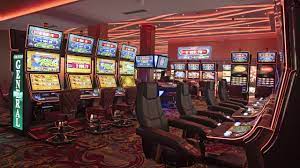

Discover Answers: Born In 1993, How Old Are You Now?
Born in 1993? You’re 28 years old now. That momentous year seems like a distant memory, yet its impact resonates in your journey. Reflecting on your accomplishments and challenges since then can be both nostalgic and empowering. Embrace the wisdom gained and the growth experienced over the years. As you navigate through life, remember that each chapter adds depth to your story, with 1993 being just the beginning of your remarkable narrative.
Born in 1993 How Old: A Look Back Through Time
Introduction
So, you’re curious about how old someone would be if they were born in 1993? Well, you’ve come to the right place! In this blog post, we’re going to take a journey through time to explore what it means to be born in 1993 and how old you would be in different years. Buckle up, because we’re about to embark on an exciting adventure!
Life in 1993
Let’s start by setting the stage for what life was like in 1993. It was a time when the world was experiencing significant cultural shifts, technological advancements, and memorable events. In 1993, Bill Clinton became the 42nd President of the United States, Jurassic Park dominated the box office, and Whitney Houston’s “I Will Always Love You” topped the music charts.
Popular Culture
The 90s were a vibrant time for popular culture, with iconic TV shows like “Friends” and “The Fresh Prince of Bel-Air” entertaining audiences. Cartoons such as “Animaniacs” and “Rugrats” captured the hearts of children around the world. If you were born in 1993, you would have grown up watching these shows and experiencing the magic of 90s nostalgia.
Technology
In 1993, the internet was in its infancy, with dial-up modems and floppy disks being the norm. Mobile phones were bulky and had limited functionalities compared to today’s sleek smartphones. Video game consoles like the Super Nintendo and Sega Genesis were all the rage, providing hours of entertainment for kids and adults alike.
How Old Would You Be In…
Now, let’s dive into the fun part – calculating how old someone born in 1993 would be in different years. It’s like taking a trip in a time machine to see how the passage of time affects our age.
In 2000
If you were born in 1993, you would have turned 7 years old in the year 2000. This was a time of excitement as the world entered a new millennium, and people around the globe celebrated the dawn of the 21st century.
In 2010
Fast forward to 2010, and someone born in 1993 would have celebrated their 17th birthday. This was a period of transition from adolescence to young adulthood, filled with new experiences, challenges, and opportunities for growth.
In 2020
In the year 2020, individuals born in 1993 would have turned 27 years old. This was a unique time marked by the global COVID-19 pandemic, which brought about significant changes to daily life and how we interacted with the world around us.
Reflections on Aging
As we contemplate the passage of time and how our age evolves with each passing year, it’s essential to embrace the journey of aging with grace and gratitude. Each year brings new experiences, lessons, and memories that shape who we are and how we perceive the world.
Embracing Growth
Growing older is a natural part of life, and it offers us the opportunity to learn, evolve, and become the best version of ourselves. Whether you’re turning 30, 40, or beyond, each age milestone represents a new chapter in your life story waiting to be written.
Celebrating Memories
Looking back on the years gone by, we can cherish the memories we’ve created, the friendships we’ve forged, and the challenges we’ve overcome. Age is not just a number; it’s a reflection of the richness of our experiences and the depth of our connections with others.
So, there you have it – a journey through time exploring what it means to be born in 1993 and how old you would be in different years. As we continue to navigate the twists and turns of life, let’s embrace each moment with gratitude and an open heart. Remember, age is just a number, but the memories and experiences we create along the way are what truly define us.
Which Generation were you born in?
Frequently Asked Questions
How old are individuals born in 1993 in [current year]?
As of the current year, individuals born in 1993 are typically [current year] – 1993 years old. You can calculate their age by subtracting the birth year (1993) from the current year.
When will individuals born in 1993 turn [specific age, e.g., 30]?
Individuals born in 1993 will turn [specific age] in the year 1993 + [specific age]. You can find out the year they will reach the desired age by adding the specific age to 1993.
At what age do individuals born in 1993 reach the legal age of adulthood?
Individuals born in 1993 reach the legal age of adulthood at the age of 18. This means that in the year they turn 18, they are considered legal adults in most countries.
Final Thoughts
Born in 1993? You are currently 28 years old. Time flies, and it’s incredible to see how quickly the years have passed since 1993. Reflecting on your life journey and accomplishments can be a great way to appreciate how far you’ve come. Cherish each moment and continue to create memorable experiences as you grow older. Born in 1993, how old you are today is a testament to the passage of time and the valuable lessons learned along the way.

Begin Your Pooper Scooper Business: How To Start A Pooper Scooper Business
Looking to start a pooper scooper business? The key is simple: meticulous planning and passion. Imagine a business where your love for animals meets entrepreneurial spirit. By following the right steps, you can turn this unique service into a thriving venture. From creating a solid business plan to marketing your services effectively, starting a pooper scooper business is an exciting opportunity waiting to be seized. It’s time to scoop up success!
How to Start a Pooper Scooper Business
Welcome to our ultimate guide on how to start a successful pooper scooper business! If you love dogs and don’t shy away from getting your hands dirty, starting a pooper scooper business can be a lucrative and rewarding venture. In this comprehensive guide, we will walk you through the essential steps and tips to get your pooper scooper business up and running smoothly.
Why Start a Pooper Scooper Business?
Before diving into the nitty-gritty details of starting a pooper scooper business, let’s discuss why this niche business can be a great opportunity for animal lovers and aspiring entrepreneurs alike. With the increasing number of pet owners seeking convenient solutions to keep their yards clean, a pooper scooper business addresses a common need in a fun and unique way.
1. Identify Your Target Market
One of the first steps in starting a pooper scooper business is identifying your target market. Consider who your potential customers are – busy pet owners, elderly individuals, or anyone looking to maintain a clean outdoor space. Understanding your target market will help you tailor your services and marketing strategies effectively.
2. Research Your Local Regulations
Before launching your pooper scooper business, it’s crucial to research and understand the local regulations regarding pet waste removal. Familiarize yourself with any licensing requirements, waste disposal regulations, and other legal considerations to ensure your business operates within the law.
Getting Started with Your Pooper Scooper Business
Now that you have a clear understanding of why starting a pooper scooper business is a great idea and have identified your target market, let’s delve into the practical steps to kickstart your entrepreneurial journey.
1. Create a Business Plan
Every successful business starts with a solid business plan. Outline your business goals, target market, services offered, pricing structure, marketing strategies, and financial projections in your business plan. A well-thought-out plan will serve as a roadmap for your pooper scooper business.
2. Invest in the Right Equipment
To provide efficient and reliable pet waste removal services, you’ll need the right equipment. Invest in durable pooper scoopers, waste bags, gloves, disinfectants, and a reliable mode of transportation. Having high-quality equipment will not only streamline your operations but also leave a positive impression on your clients.
3. Set Your Pricing Strategy
Determine how you will price your pooper scooper services. Consider factors such as the size of the yard, the number of pets, frequency of visits, and any additional services you offer. Research the pricing models of your competitors and set competitive yet profitable rates for your services.
Marketing Your Pooper Scooper Business
Effective marketing is essential to attract clients and grow your pooper scooper business. Here are some marketing strategies to promote your services and reach potential customers:
1. Create a Professional Website
Establishing a professional website for your pooper scooper business is crucial in today’s digital age. Include information about your services, pricing, contact details, and customer testimonials on your website. Optimize your website for local SEO to ensure it ranks high in search engine results when potential clients look for pet waste removal services in your area.
2. Utilize Social Media
Engage with pet owners and local communities on social media platforms like Facebook, Instagram, and Twitter. Share informative and engaging content related to pet care, cleanliness tips, and the benefits of hiring a pooper scooper service. Social media is a powerful tool to showcase your expertise and attract new clients.
3. Offer Promotions and Discounts
Attract new clients and encourage repeat business by offering promotions and discounts. Consider running special promotions for first-time customers, referral discounts, or seasonal deals to incentivize pet owners to try your services. Promotions can help generate buzz around your business and increase customer loyalty.
Providing Exceptional Customer Service
Delivering exceptional customer service is key to building a loyal customer base and growing your pooper scooper business. Here are some tips to provide top-notch service to your clients:
1. Be Reliable and Consistent
Establish a regular schedule for pet waste removal services and stick to it. Being reliable and consistent in your services will build trust with your clients and ensure their outdoor spaces are always clean and fresh. Communicate proactively with clients regarding any schedule changes or updates.
2. Maintain Professionalism
Interact with clients professionally and courteously at all times. Dress in a clean and professional manner, maintain a friendly demeanor, and address any client concerns promptly and effectively. Building a positive reputation for professionalism will set your pooper scooper business apart from the competition.
3. Ask for Feedback
Solicit feedback from your clients to continuously improve your services. Encourage clients to share their thoughts and suggestions on how you can enhance their experience. Act on constructive feedback to refine your operations and ensure customer satisfaction.
Expanding Your Pooper Scooper Business
As your pooper scooper business grows, you may consider expanding your services or scaling your operations. Here are some ideas to take your business to the next level:
1. Offer Additional Pet Care Services
Diversify your service offerings by providing additional pet care services such as dog walking, pet sitting, or grooming. Bundling services can attract more clients and increase your revenue streams. Ensure you have the necessary skills and resources to offer high-quality pet care services.
2. Hire Employees
If your workload becomes overwhelming, consider hiring employees to help with pet waste removal services. Hire reliable and trustworthy individuals who share your passion for animals and commitment to excellent customer service. Properly train your employees to uphold the standards of your pooper scooper business.
3. Expand to New Areas
Explore opportunities to expand your pooper scooper business to new neighborhoods or cities. Conduct market research to identify areas with a high demand for pet waste removal services and develop a strategic expansion plan. Growing your business into new territories can significantly increase your client base and profitability.
Congratulations! You are now equipped with the knowledge and insights to start and grow a successful pooper scooper business. By following the steps outlined in this guide, providing exceptional service, and staying dedicated to your passion for animals, you can build a thriving pet waste removal business that delights both pets and their owners.
How to Start a Pooper Scooper Business Step by Step: $0 to $100k/Year
Frequently Asked Questions
How can I start a pooper scooper business in my area?
To start a pooper scooper business, you first need to research the demand in your area. Create a business plan detailing your services, pricing, and target market. Obtain necessary licenses or permits, invest in quality equipment, and develop a marketing strategy to attract customers. Consistency, reliability, and excellent customer service will be key to building a successful pooper scooper business.
What equipment do I need to start a pooper scooper business?
Essential equipment for a pooper scooper business includes scoopers, disposable bags, gloves, disinfectant spray, and a reliable vehicle for transportation. Invest in durable tools that make the cleaning process efficient and hygienic. Additionally, consider providing your employees with uniforms and branded gear to enhance professionalism and credibility.
How can I attract customers to my pooper scooper business?
To attract customers to your pooper scooper business, focus on targeted marketing efforts. Utilize social media platforms, local advertising, and word-of-mouth referrals. Offer promotional deals for new clients or discounts for recurring services. Building a strong online presence through a professional website and positive customer reviews can also help establish credibility and attract more clients.
Final Thoughts
Starting a pooper scooper business requires planning, marketing, and dedication. Research your target market and set competitive prices. Utilize online platforms and social media to promote your services. Emphasize the convenience and benefits of hiring a pooper scooper service. Offer excellent customer service to build trust and loyalty. In conclusion, with the right approach and focus on how to start a pooper scooper business, you can turn this niche service into a successful venture.
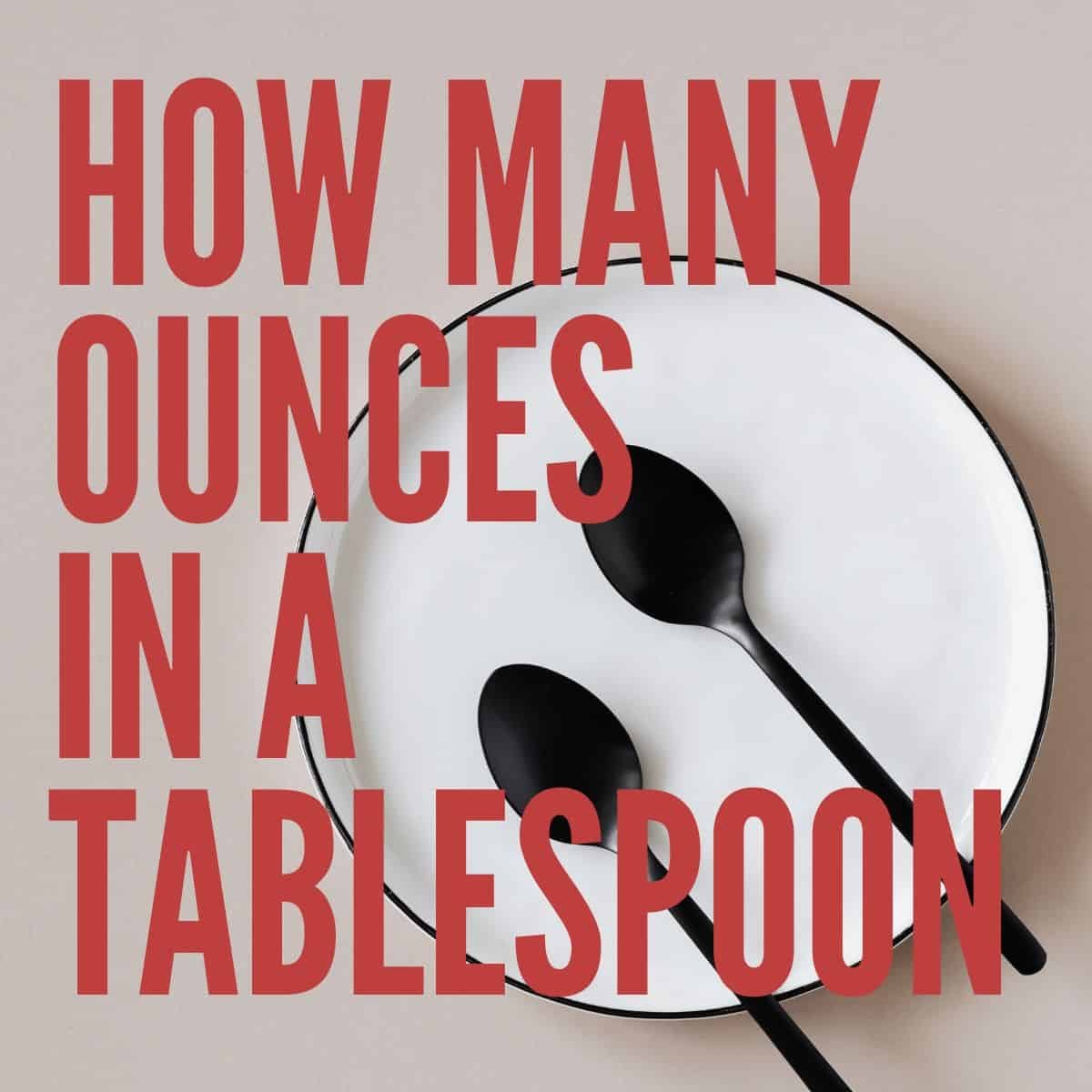
How Many Ounces Is Tablespoon: Simple Conversion Guide
A tablespoon is equivalent to half an ounce. This conversion between tablespoons and ounces is a common query among home cooks and bakers looking to get their measurements just right. Understanding how many ounces are in a tablespoon can make a significant difference in the outcome of your recipes. Let’s delve further into this conversion to enhance your culinary precision.
How Many Ounces is a Tablespoon?
Welcome to our comprehensive guide on understanding the conversion of tablespoons to ounces. Whether you’re an aspiring chef or just someone who loves spending time in the kitchen, knowing how many ounces are in a tablespoon can make a big difference in your cooking adventures. Let’s dive in and explore this conversion together!
The Basics of Tablespoons and Ounces
Before we get into the nitty-gritty details, let’s start with the basics. A tablespoon is a unit of measurement commonly used in cooking to measure ingredients like spices, liquids, and more. On the other hand, an ounce is another unit of measurement that is often used in recipes to specify the amount of an ingredient needed. Understanding how these two units relate to each other can help you follow recipes more accurately.
Converting Tablespoons to Ounces
So, how many ounces are in a tablespoon? The answer is not as straightforward as you might think because it depends on what you are measuring. In general, there are 0.5 ounces in one tablespoon. This means that if a recipe calls for 2 tablespoons of a certain ingredient, you would need 1 ounce of that ingredient. However, it’s essential to remember that this conversion can vary depending on the density of the ingredient.
Fluid Ounces vs. Dry Ounces
When dealing with measurements in the kitchen, it’s crucial to distinguish between fluid ounces and dry ounces. Fluid ounces are used to measure liquids like water, milk, or oil, while dry ounces are used for ingredients like flour, sugar, or spices. Understanding this difference can help you accurately convert tablespoons to ounces based on the type of ingredient you are working with.
Practical Examples and Tips
Let’s walk through a couple of common cooking scenarios to give you a better idea of how tablespoons and ounces work together:
Example 1: Liquid Ingredients
If a recipe calls for 4 tablespoons of olive oil, you would need 2 fluid ounces of olive oil. This is because 1 tablespoon is equivalent to 0.5 fluid ounces. Keeping this conversion in mind can help you measure liquid ingredients accurately.
Example 2: Dry Ingredients
When dealing with dry ingredients like sugar, converting tablespoons to ounces can be slightly different. For example, if a recipe requires 8 tablespoons of sugar, you would need 4 dry ounces of sugar. This is because dry ingredients have a different density compared to liquids.
Helpful Tools for Conversions
Converting tablespoons to ounces can sometimes be tricky, especially when you’re working with complex recipes. Fortunately, there are many online conversion tools and mobile apps available that can help you quickly and accurately convert between different units of measurement. These tools can be incredibly handy in the kitchen and can save you time and effort.
Understanding how many ounces are in a tablespoon is a valuable skill for anyone who enjoys cooking or baking. By mastering this conversion, you can follow recipes with ease and ensure that your dishes turn out just right. Remember to consider the type of ingredient you’re working with, whether it’s a liquid or a dry ingredient, to accurately convert tablespoons to ounces. Happy cooking!
We hope this guide has been helpful in clarifying the conversion of tablespoons to ounces. Remember, practice makes perfect, so don’t be afraid to experiment in the kitchen and discover what works best for you. Stay tuned for more cooking tips and tricks in our upcoming articles!
Thank you for reading!
How Many Ounces In A Tablespoon
Frequently Asked Questions
How many ounces are in a tablespoon?
A tablespoon is equivalent to 0.5 ounces. It is a common unit of measurement used in cooking to provide accurate amounts of ingredients for recipes.
What is the conversion rate from tablespoons to ounces?
To convert tablespoons to ounces, you simply divide the number of tablespoons by 2. For example, 4 tablespoons would equal 2 ounces.
Can you provide a practical example of how to measure ounces using tablespoons?
If a recipe calls for 8 ounces of an ingredient and you need to measure it in tablespoons, you would require 16 tablespoons since 1 tablespoon is equal to 0.5 ounces.
Final Thoughts
In conclusion, it’s essential to know how many ounces a tablespoon holds. A tablespoon is equivalent to half an ounce, which is crucial for accurate cooking and baking. Understanding this conversion can greatly impact the outcome of your recipes. So, next time you’re in the kitchen, keep in mind how many ounces are in a tablespoon for precise measurements and successful culinary creations.

Simple Steps: How To Dry Out Soil For Improved Plant Growth
To dry out soil effectively, a strategic approach is crucial. Excess moisture can hinder plant growth and lead to root rot. A balance is key – not too dry nor too wet. Start by improving drainage, using organic matter to promote aeration. Consider the season and local climate for optimal results. Patience and consistency are crucial in the process of drying out soil. By following these steps, you can achieve the right balance for healthy plant growth.
How to Dry Out Soil: A Complete Guide
Welcome, fellow gardeners and plant enthusiasts! Have you ever faced the challenge of dealing with waterlogged or soggy soil in your garden or pots? Fear not, for in this comprehensive guide, we will explore various effective methods on how to dry out soil and restore the perfect balance for your beloved plants.
The Importance of Well-Drained Soil
Before we delve into the ways to dry out soil, let’s understand why well-drained soil is crucial for the health and growth of plants. Soil that is constantly saturated with water can lead to root rot, oxygen deprivation, and a host of other issues that can harm your plants. Adequate drainage is essential to prevent water from pooling around the roots and causing damage.
Signs of Waterlogged Soil
Identifying waterlogged soil is the first step in rectifying the issue. Common signs include stagnant water on the surface, a foul smell, wilting plants, yellowing leaves, and slow growth. Observing these signs promptly can help you take timely action to save your plants.
Methods to Dry Out Soil
1. Adjusting Watering Practices
One of the simplest ways to dry out soil is by adjusting your watering practices. Overwatering is a common cause of waterlogged soil. Ensure you water your plants only when needed, allowing the top few inches of soil to dry out between waterings. This will help maintain the right moisture level in the soil.
2. Improving Drainage
If your soil tends to retain water, consider improving the drainage in your garden or pots. Adding organic matter such as compost, perlite, or sand can help loosen compacted soil and enhance drainage. You can also create raised beds or use pots with drainage holes to facilitate water flow.
3. Using Mulch
Mulching is a great way to regulate soil moisture and prevent waterlogging. Organic mulches like bark chips or straw can help absorb excess water and reduce evaporation, maintaining a balanced level of moisture in the soil. Apply a layer of mulch around your plants to protect them from waterlogging.
4. Aerating the Soil
Aerating the soil can promote better drainage and prevent waterlogging. Using a garden fork, gently loosen the soil to allow air, water, and nutrients to penetrate deeper. Aeration also helps break up compacted soil, improving root growth and overall plant health.
5. Using Soil Amendments
Soil amendments such as gypsum or agricultural lime can help improve soil structure and drainage. These amendments work by breaking up clay particles and improving water infiltration. Incorporate them into the soil according to package instructions to enhance drainage and prevent waterlogging.
6. Installing a French Drain
If waterlogging is a persistent issue in your garden, consider installing a French drain. A French drain is a trench filled with gravel or rock that redirects excess water away from the soil. This can be an effective long-term solution for areas prone to waterlogging.
7. Using a Wet-Dry Vacuum
In cases of severe waterlogging, you can use a wet-dry vacuum to remove excess water from the soil. Be sure to use the vacuum on the lowest setting to avoid damaging the roots. This method can quickly eliminate standing water and prevent further damage to your plants.
By following these practical methods on how to dry out soil, you can ensure a healthy and thriving environment for your plants. Remember to monitor the moisture levels regularly and make adjustments as needed to prevent waterlogging. With a little care and attention, you can enjoy a lush and vibrant garden free from the woes of waterlogged soil. Happy gardening!
Thank you for reading our guide on how to dry out soil. We hope you found it informative and helpful in your gardening endeavors. Stay tuned for more tips and tricks on plant care and soil management. Remember, a little love and care can go a long way in nurturing your green friends!
How to dry out Wet grounds
Frequently Asked Questions
How can I dry out soil effectively after heavy rainfall?
To dry out soil after heavy rainfall, first, ensure good drainage in the area by adding organic matter like compost to improve soil structure. Additionally, you can use aeration tools to promote air circulation within the soil and speed up the drying process. Avoid overwatering during this time and consider using a tarp to cover the soil to prevent further saturation.
What are some techniques to dry out soil in a garden bed or container?
If you need to dry out soil in a garden bed or container, you can gently loosen the top layer of soil with a fork to improve aeration. Placing the container in a sunny spot can help evaporate excess moisture. Using fans or dehumidifiers near the soil can also aid in drying it out more quickly. Be mindful not to compact the soil further during this process.
Can excessive watering lead to waterlogged soil, and how can I dry it out?
Yes, excessive watering can lead to waterlogged soil, which deprives plant roots of oxygen and can cause wilting or root rot. To dry out waterlogged soil, you can create drainage channels, mix in sand or perlite for better drainage, and avoid watering until the soil has dried out to the desired level. Elevating containers and adjusting watering practices can prevent future waterlogging issues.
Final Thoughts
In conclusion, effectively drying out soil involves proper drainage, sunlight exposure, and aeration. Avoid overwatering and consider using organic matter to improve soil structure. Remember to test the soil moisture levels regularly to prevent issues with waterlogging. Following these steps will help you successfully dry out soil and create a healthy environment for your plants to thrive.

Exploring How Long Stinger Detox Lasts In Your System
Stinger detox typically lasts in your system for up to 2 hours. Once you’ve taken it, you might wonder how long does stinger detox last in your system. The timeframe can vary depending on factors like your metabolism and the amount ingested. Understanding the duration of stinger detox effects is crucial for successful toxin elimination. It’s essential to know when it’s most effective to achieve optimal results.
How Long Does Stinger Detox Last in Your System
Welcome, everyone! Today, we are going to delve into the world of detox products, focusing on Stinger Detox and how long it lasts in your system. If you’ve ever wondered about detoxing, how it works, and how long the effects last, you’ve come to the right place! Let’s explore together and find out all you need to know about Stinger Detox.
Understanding Stinger Detox
Before we talk about how long Stinger Detox lasts in your system, it’s important to understand what it is. Stinger Detox is a popular brand of detox products designed to help rid your body of toxins. These toxins can come from various sources such as food, drinks, medications, or even environmental factors. Stinger Detox products aim to cleanse your body and support your overall health and wellness.
How Does Stinger Detox Work?
Stinger Detox works by containing a blend of natural ingredients that are believed to help eliminate toxins from your body. These ingredients may include herbs, vitamins, and minerals that support your body’s natural detoxification processes. When you consume a Stinger Detox product, it can help boost your body’s ability to flush out toxins through processes like urination and sweating.
Factors That Affect How Long Stinger Detox Lasts
Now, let’s get to the main question – how long does Stinger Detox last in your system? The duration for which Stinger Detox remains effective can vary from person to person based on several factors:
1. Metabolism
Your metabolism plays a significant role in how fast your body processes and eliminates toxins. People with a faster metabolism may experience the effects of Stinger Detox for a shorter period compared to those with a slower metabolism.
2. Body Weight
Body weight can also impact how long Stinger Detox lasts in your system. Generally, individuals with a higher body weight may require larger doses of detox products to achieve the desired results, which can affect the duration of effectiveness.
3. Frequency of Use
If you regularly use Stinger Detox or other detox products, your body may build up a tolerance to them over time. This can influence how long the detox effects last and may require adjustments to your detox routine.
4. Hydration Levels
Staying hydrated is crucial for the effectiveness of detox products like Stinger Detox. Proper hydration can help your body eliminate toxins more efficiently, potentially extending the duration of detox effects.
How Long Can You Expect Stinger Detox to Last?
While individual experiences may vary, most people can expect the effects of Stinger Detox to last for a few hours to a couple of days. The key is to follow the recommended usage instructions provided with the product to maximize its effectiveness.
So, there you have it – a comprehensive guide on how long Stinger Detox lasts in your system. Remember, everyone’s body is unique, so it’s essential to listen to your body and adjust your detox routine accordingly. If you’re considering using Stinger Detox or any other detox product, consult with a healthcare professional to ensure it aligns with your health goals.
We hope this article has shed light on the topic of detox products and their effects. Stay informed, stay healthy, and remember that your well-being always comes first!
Thank you for joining us on this exploration of Stinger Detox – until next time!
Gotta Pass a Drug Test | Stinger Detox 5x Review
Frequently Asked Questions
How long does Stinger Detox stay in your system after consumption?
Stinger Detox can typically be detected in your system for up to 1-3 hours after consumption, depending on various factors such as your metabolism, body weight, and frequency of use.
Is it possible to extend the time Stinger Detox remains detectable in the body?
While there is no sure way to prolong the presence of Stinger Detox in your system artificially, staying hydrated and maintaining a healthy lifestyle may help slightly slow down the detoxification process.
Can certain medications or medical conditions affect how long Stinger Detox is detectable?
Yes, some medications and medical conditions can potentially impact the metabolism of Stinger Detox in your system, leading to variations in detection times. It is advisable to consult with a healthcare professional for personalized advice in such situations.
Final Thoughts
In conclusion, Stinger Detox typically lasts for up to 2-3 hours in your system. Its effectiveness may vary based on individual factors such as metabolism and frequency of toxin exposure. To maximize results, follow the recommended usage guidelines as instructed. Remember to consult with a healthcare professional before using any detox products. It’s important to understand how long does Stinger Detox last in your system to plan accordingly for any upcoming drug tests.
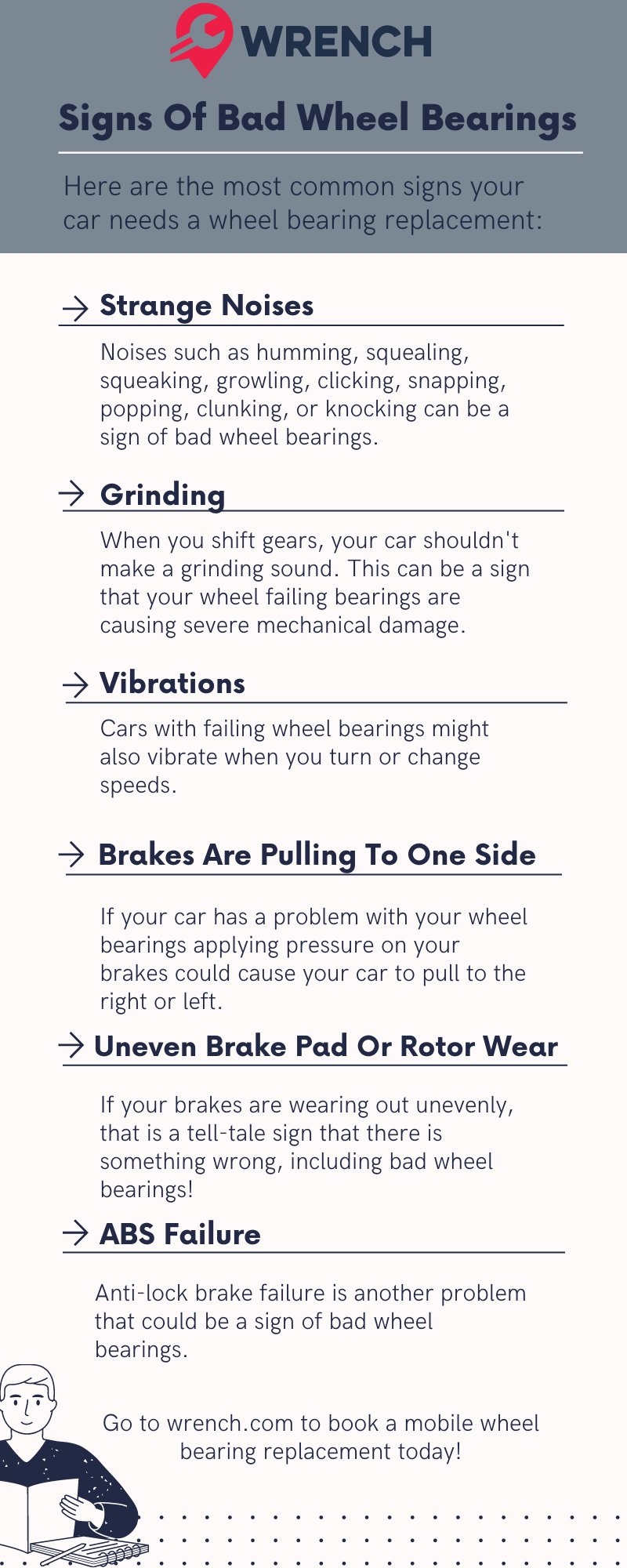
Tips For Identifying A Bad Wheel Bearing: How To Know If You Have A Bad Wheel Bearing
If you hear a constant humming or growling noise coming from your wheels while driving, it could be a sign of a bad wheel bearing. These crucial components support the weight of the vehicle and ensure smooth rotation. Pay attention to any unusual vibrations or steering issues, as they might indicate a failing wheel bearing. In this article, we will explore how to know if you have a bad wheel bearing and the steps to take for a timely diagnosis and repair.
How to Know If You Have a Bad Wheel Bearing
Do you ever hear strange noises coming from your car while driving? Or do you feel an unusual vibration when you’re on the road? These could be signs that you have a bad wheel bearing. Your wheel bearings play a crucial role in the smooth operation of your vehicle, so it’s important to know when they need attention. In this article, we will explore the various signs that indicate a bad wheel bearing and what you can do about it.
What Is a Wheel Bearing?
Before we dive into how to identify a bad wheel bearing, let’s first understand what a wheel bearing is. A wheel bearing is a set of steel balls enclosed by a metal ring. Its main function is to enable the wheel to spin freely with minimal friction. Wheel bearings are found in each wheel hub assembly of a vehicle and are crucial for the overall performance and safety of the car.
Signs of a Bad Wheel Bearing
There are several telltale signs that can indicate a problem with your wheel bearing. Here are some common symptoms to look out for:
1. Unusual Noises
If you hear a grinding, clicking, or rumbling noise coming from one of your wheels, it could be a sign of a bad wheel bearing. These noises typically get louder as you accelerate or make turns. Pay close attention to any unusual sounds, as they can indicate a serious issue with your wheel bearing.
2. Vibration in the Steering Wheel
Another sign of a bad wheel bearing is a noticeable vibration in the steering wheel while driving. This vibration may feel like a wobble or shake, especially at higher speeds. If you experience this, it’s best to have your wheel bearings checked by a professional mechanic.
3. Uneven Tire Wear
Bad wheel bearings can cause uneven tire wear, leading to bald spots or worn patches on your tires. If you notice that your tires are wearing out unevenly, it could be due to a faulty wheel bearing causing misalignment in the wheels.
4. Steering Wheel Misalignment
A bad wheel bearing can also result in steering wheel misalignment. If you find it hard to keep your car straight while driving or notice the steering wheel pulling to one side, it may indicate a problem with the wheel bearings.
5. Wheel Movement and Play
If you jack up your car and notice excessive wheel movement or play when you try to wiggle the wheel back and forth, it could be a sign of a loose or damaged wheel bearing. This can affect the stability and safety of your vehicle.
What to Do If You Suspect a Bad Wheel Bearing
If you suspect that you have a bad wheel bearing based on the signs mentioned above, it’s essential to take action promptly. Ignoring a faulty wheel bearing can lead to more significant problems and compromise the safety of your vehicle. Here are steps you can take:
1. Consult a Professional Mechanic
The first and most crucial step is to consult a professional mechanic to diagnose the issue. A qualified mechanic will have the expertise and tools to inspect your wheel bearings and determine if they need to be replaced.
2. Replace the Wheel Bearings
If your mechanic confirms that you have a bad wheel bearing, it’s important to follow their recommendation to replace the faulty part. Wheel bearing replacement is a complex process and requires specialized tools, so it’s best left to professionals.
3. Regular Maintenance
To prevent future wheel bearing issues, it’s essential to keep up with regular maintenance of your vehicle. Follow the manufacturer’s recommended service schedule and have your wheel bearings inspected during routine check-ups.
In conclusion, knowing how to identify a bad wheel bearing is crucial for maintaining the safety and performance of your vehicle. By paying attention to the signs such as unusual noises, steering wheel vibrations, uneven tire wear, steering misalignment, and wheel movement, you can address wheel bearing issues promptly and avoid potential hazards on the road. Remember to consult a professional mechanic for accurate diagnosis and timely repairs to keep your car running smoothly.
Stay vigilant, listen to your car, and take action when needed to ensure your wheel bearings are in good condition and your journeys are safe and enjoyable!
How to 100% diagnose a bad wheel bearing.
Frequently Asked Questions
How can I tell if my car has a bad wheel bearing?
To determine if you have a bad wheel bearing, you may notice a few common signs. One of the most typical signs is a loud, constant noise coming from the affected wheel that increases with vehicle speed. You may also feel vibrations or wobbling in the steering wheel or vehicle as you drive. Another indicator is uneven tire wear, which can result from the wheel bearing not allowing the wheel to sit properly.
Why is it important to address a bad wheel bearing promptly?
It is crucial to address a bad wheel bearing promptly because ignoring the issue can lead to serious safety concerns and further damage to your vehicle. A failed wheel bearing can affect your ability to control the car, potentially resulting in accidents. Additionally, a bad wheel bearing can cause damage to other components of the wheel assembly, leading to more extensive and costly repairs.
Can a bad wheel bearing cause a steering wheel to feel loose?
Yes, a bad wheel bearing can cause the steering wheel to feel loose or wobbly while driving. When a wheel bearing is worn out or damaged, it can create excess play in the wheel, causing the steering to feel less responsive and shaky. If you notice your steering wheel feeling loose, it is essential to have your wheel bearings inspected by a professional mechanic.
Final Thoughts
Feeling vibrations, hearing unusual noises, and experiencing steering wheel looseness are signs that you may have a bad wheel bearing. Don’t ignore these warning signals – addressing the issue promptly can prevent further damage and ensure your safety on the road. Regular maintenance checks and listening to your vehicle can help you quickly identify if you have a bad wheel bearing. Remember, recognizing the signs of a bad wheel bearing early on can save you from costly repairs down the road.
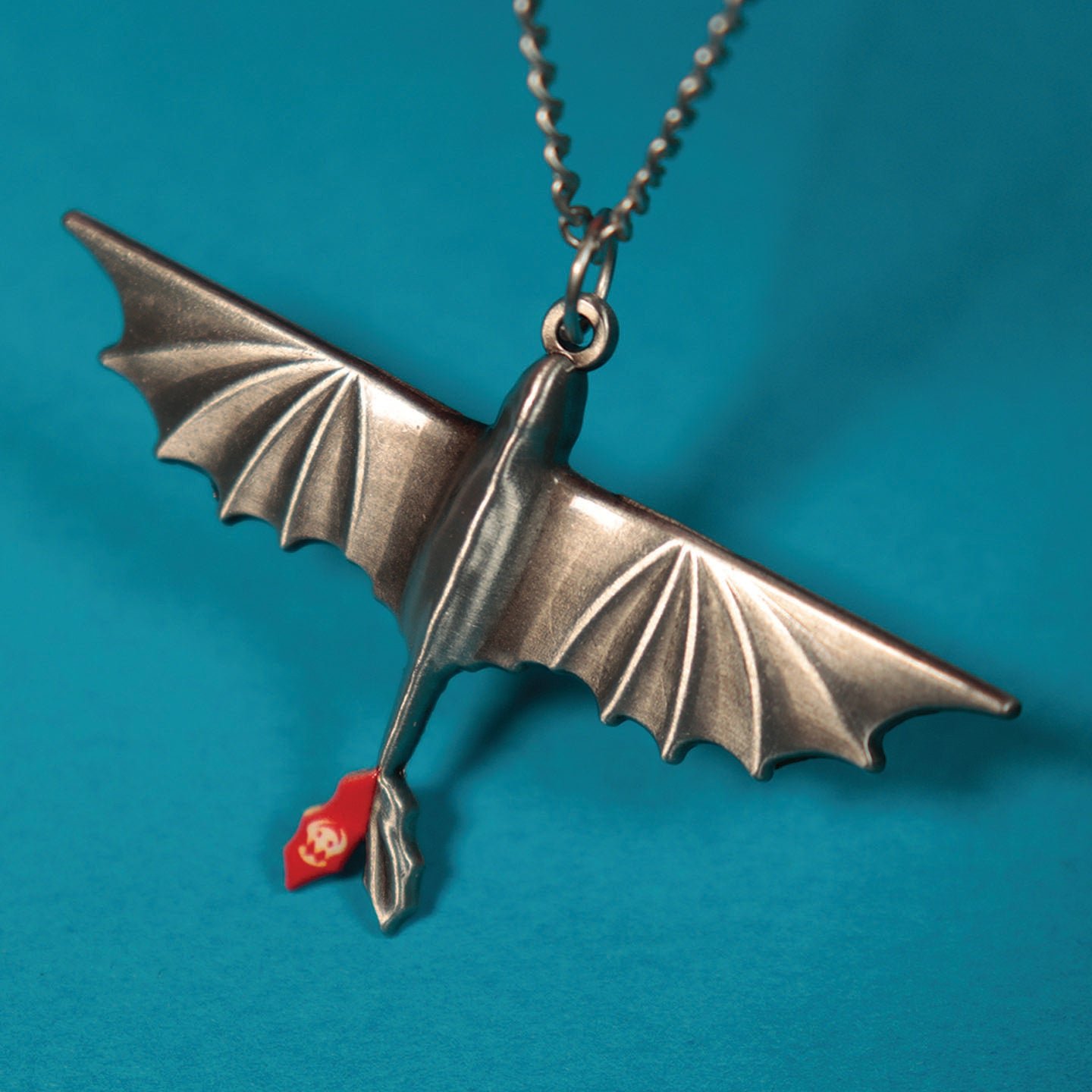
Master The Art Of How To Train Your Dragon Jewelry
Looking to master the art of how to train your dragon jewelry? Dive into a world where elegance meets the mystical allure of dragons. Transform ordinary accessories into breathtaking statement pieces that capture the essence of these legendary creatures. Unleash your creativity and craft unique jewelry inspired by the vibrant colors and fierce beauty of dragons. Let’s embark on a journey where imagination knows no bounds as we explore the enchanting realm of dragon-inspired jewelry making.
Discover the Magic of How to Train Your Dragon Jewelry
Welcome, dragon enthusiasts! Are you ready to embark on a magical journey into the world of “How to Train Your Dragon” jewelry? Whether you are a fan of the beloved book series or the thrilling movies, this guide will help you uncover the wonders of dragon-themed jewelry and how you can incorporate these mythical creatures into your everyday style.
The Fascination with Dragons
Dragons have intrigued humans for centuries with their majestic presence and mystical abilities. From ancient folklore to modern pop culture, dragons have captured our imagination and inspired countless stories and legends. “How to Train Your Dragon,” created by author Cressida Cowell, has brought these fantastical creatures to life in a heartwarming tale of friendship, bravery, and adventure.
Why Wear Dragon Jewelry?
Wearing dragon jewelry is a way to show your love for these mythical beings and express your unique personality. Dragon-themed accessories can add a touch of fantasy and mystery to your look, whether you’re attending a cosplay event or just want to add a bit of whimsy to your everyday outfits. From dragon pendants to rings to earrings, there are endless ways to incorporate these magical creatures into your jewelry collection.
Types of Dragon Jewelry
When it comes to “How to Train Your Dragon” jewelry, the options are as vast as the world of dragons itself. Here are some popular types of dragon-themed jewelry that you can explore:
Dragon Pendants
Dragon pendants are a classic choice for those who want to make a bold statement with their jewelry. These intricate pieces often feature detailed dragon designs in various poses, from fierce and menacing to graceful and majestic. Dragon pendants can be worn on chains or cords and are perfect for adding a touch of fantasy to any outfit.
Dragon Rings
Dragon rings are a popular choice for both men and women who want to showcase their love for dragons in a subtle yet stylish way. These rings come in a variety of designs, from simple bands with dragon motifs to more elaborate creations with gemstone accents. Whether you prefer a sleek and modern look or a more vintage-inspired design, there is a dragon ring out there for everyone.
Dragon Earrings
For those who want to add a touch of whimsy to their jewelry collection, dragon earrings are the perfect choice. These playful accessories come in a variety of styles, from dainty studs to statement ear cuffs, all featuring charming dragon motifs. Dragon earrings are a fun way to inject some fantasy into your everyday look and make a bold fashion statement.
How to Choose the Perfect Dragon Jewelry
With so many options available, finding the perfect piece of “How to Train Your Dragon” jewelry can seem like a daunting task. Here are some tips to help you choose the right dragon accessory for you:
Consider Your Style
Before you start shopping for dragon jewelry, think about your personal style and how you can incorporate dragon-themed accessories into your wardrobe. If you prefer a more subtle look, opt for small, understated pieces like dragon stud earrings or a delicate dragon pendant. For those who want to make a statement, bold dragon rings or earrings with intricate designs are the way to go.
Choose Quality Materials
When selecting dragon jewelry, pay attention to the materials used in the piece. Look for high-quality materials like sterling silver, gold, or stainless steel, which are durable and long-lasting. If the jewelry features gemstones, make sure they are genuine and securely set to prevent them from falling out.
Embrace Your Creativity
Don’t be afraid to mix and match different pieces of dragon jewelry to create a unique and personalized look. Layer dragon pendants with other necklaces, stack dragon rings on different fingers, or pair dragon earrings with other whimsical accessories to show off your creative flair. The key is to have fun and experiment with different combinations until you find a style that speaks to you.
Caring for Your Dragon Jewelry
To ensure that your “How to Train Your Dragon” jewelry stays in top condition, it’s essential to take proper care of your pieces. Here are some tips to help you keep your dragon accessories looking their best:
Store Your Jewelry Properly
When you’re not wearing your dragon jewelry, store it in a cool, dry place away from direct sunlight and humidity. Consider keeping your pieces in a jewelry box or pouch to prevent them from getting scratched or tangled with other accessories.
Clean Your Jewelry Regularly
To maintain the luster of your dragon jewelry, clean it regularly using a soft, lint-free cloth to remove dirt, oil, and sweat residue. Avoid using harsh chemicals or abrasive materials that could damage the metal or gemstones. For intricate designs, you can also use a soft-bristled brush to gently scrub hard-to-reach areas.
Avoid Exposing Your Jewelry to Harsh Chemicals
When wearing your dragon jewelry, avoid exposing it to harsh chemicals such as perfumes, lotions, and hair products, as they can tarnish the metal and dull the gemstones. Remove your jewelry before swimming or showering to prevent damage from chlorine and saltwater.
Where to Find How to Train Your Dragon Jewelry
If you’re ready to add some dragon magic to your jewelry collection, there are plenty of places where you can find “How to Train Your Dragon” jewelry. Here are some popular options to help you get started:
Online Retailers
Online retailers like Etsy, Amazon, and Hot Topic offer a wide selection of dragon-themed jewelry inspired by “How to Train Your Dragon.” You can browse through various designs, materials, and price ranges to find the perfect piece that speaks to your dragon-loving heart.
Local Jewelry Stores
Visit your local jewelry stores or boutiques to explore their collections of dragon jewelry. Many stores carry unique and handmade pieces that you won’t find anywhere else, allowing you to support local artisans and find one-of-a-kind treasures that reflect your love for dragons.
Fan Conventions and Events
If you’re a die-hard “How to Train Your Dragon” fan, consider attending fan conventions and events dedicated to the series. These gatherings often feature vendors selling dragon-themed merchandise, including jewelry, apparel, and collectibles. You can meet fellow fans, discover new artists, and immerse yourself in the enchanting world of dragons.
Unleash Your Inner Dragon
Now that you’ve learned all about “How to Train Your Dragon” jewelry, it’s time to unleash your inner dragon and embrace the magic of these mythical creatures. Whether you’re a seasoned dragon aficionado or just dipping your toes into the world of dragon jewelry, there’s a piece out there waiting to join your collection and ignite your imagination.
So go ahead, explore, experiment, and wear your dragon jewelry with pride. Let these awe-inspiring creatures accompany you on your daily adventures and remind you of the power of friendship, courage, and the boundless possibilities of the imagination. Happy dragon hunting!
How To Train Your Dragon | Gnoce Collection 2025 Review!
Frequently Asked Questions
Q: What types of jewelry can be inspired by “How to Train Your Dragon”?
A: Jewelry inspired by “How to Train Your Dragon” can include dragon-themed necklaces, bracelets, earrings, and rings. These pieces often feature dragon scales, wings, claws, or character symbols from the movie.
Q: How can I incorporate dragon motifs into my jewelry designs?
A: You can incorporate dragon motifs into your jewelry designs by using dragon-shaped pendants, adding dragon-scale textures, or including gemstones that represent dragon colors like green for Toothless or red for Hookfang.
Q: What materials are commonly used to make “How to Train Your Dragon” jewelry?
A: Common materials used to make “How to Train Your Dragon” jewelry include sterling silver, gold, enamel, and semi-precious stones. These materials help capture the essence of the mystical world of dragons.
Final Thoughts
In conclusion, training your dragon jewelry is an exciting journey worth embarking on. By following our tips and guidance, you can ensure your jewelry remains in top condition. Remember to clean and store your dragon jewelry properly to maintain its beauty and shine. With a little care and attention, your how to train your dragon jewelry will continue to dazzle for years to come.

Exploring The Cost: How Much Is Hibachi Per Person
Hibachi per person typically ranges from $20 to $50 at most restaurants. The experience of dining at a hibachi grill is not just about the food but also the fantastic display of culinary skills right in front of you. The sizzling sounds, the artful knife techniques, and the delicious aroma all create an atmosphere that makes the price worth it. Whether you’re celebrating a special occasion or just in the mood for a memorable meal, hibachi per person is an experience that combines entertainment and delicious cuisine.
How Much is Hibachi Per Person: A Detailed Guide
Welcome, curious food enthusiasts! Today, we are diving into the delicious world of hibachi and exploring the question that many wonder about – how much does it cost per person to experience the joy of hibachi dining? Whether you are a seasoned hibachi lover or a newcomer to this culinary adventure, this guide will provide you with all the information you need to know about the costs associated with hibachi dining on a per person basis. So, let’s fire up the grill and get started!
What is Hibachi?
Before we talk about the cost, let’s first understand what hibachi is. Hibachi is a traditional Japanese style of cooking that involves grilling meat, seafood, and vegetables on a high-heat iron griddle. The term “hibachi” actually refers to the heating device itself, which is a portable charcoal or gas grill. In modern times, hibachi dining has evolved into a fun and interactive culinary experience where skilled chefs cook your food right in front of you on a large flat grill.
The Hibachi Experience
When you dine at a hibachi restaurant, you are not just enjoying a meal; you are part of a show. The hibachi chef, also known as a teppanyaki chef, entertains diners with impressive knife skills, dazzling tricks, and a playful attitude. From creating onion volcanoes to flipping shrimp tails into their hats, these chefs are masters of both cooking and showmanship.
Menu Options
Most hibachi restaurants offer a variety of menu options that typically include combinations of steak, chicken, seafood, and vegetarian dishes. Some restaurants may also have premium options like Kobe beef or lobster tail for those looking to indulge in a more luxurious dining experience. Additionally, hibachi meals are usually served with soup, salad, rice, and vegetables, providing a well-rounded dining experience.
How Much Does Hibachi Cost Per Person?
Now, let’s get to the heart of the matter – how much can you expect to pay per person when dining at a hibachi restaurant? The cost of hibachi per person can vary depending on several factors such as the location of the restaurant, the quality of ingredients used, the level of skill of the chefs, and the overall dining experience offered. On average, however, you can expect to pay around $20 to $50 per person for a standard hibachi meal.
Factors Affecting the Cost
1. Location: Hibachi restaurants in larger cities or upscale neighborhoods may have higher prices compared to those in smaller towns or more casual settings.
2. Quality of Ingredients: Restaurants that use high-quality ingredients, such as prime steak or fresh seafood, may charge more for their hibachi meals.
3. Chef’s Skill Level: Highly skilled hibachi chefs who put on elaborate performances and showcase their culinary talents may command higher prices for their services.
4. Restaurant Reputation: Popular hibachi restaurants with a strong reputation for excellent food and service may have higher prices due to the demand for their dining experience.
Tips for Saving Money
If you are looking to enjoy the hibachi experience without breaking the bank, here are a few tips to help you save money:
1. Lunch Specials
Many hibachi restaurants offer lunch specials that are more affordable than their dinner menu. By dining during lunch hours, you can enjoy a similar hibachi experience at a discounted price.
2. Early Bird Discounts
Some restaurants may offer early bird discounts for diners who visit during off-peak hours. Taking advantage of these promotions can help you save on your hibachi meal.
3. Group Discounts
If you are dining with a group of friends or family members, inquire about group discounts or special group packages that hibachi restaurants may offer. Group rates are often more budget-friendly per person.
In conclusion, the cost of hibachi per person can vary depending on various factors, but on average, you can expect to pay between $20 to $50 for a standard hibachi meal. Hibachi dining is not just about the food; it’s about the experience. The lively atmosphere, skilled chefs, and interactive cooking style make it a dining experience unlike any other. So, whether you are celebrating a special occasion or simply looking to enjoy a memorable meal, hibachi is a fantastic choice for a fun and delicious dining experience.
Now that you know how much hibachi costs per person and have some money-saving tips in your pocket, go ahead and treat yourself to a hibachi feast. Your taste buds and your inner foodie will thank you!
Hibachi 4 U: 8.4/10 & $50 per person 🇯🇵#chicagohibachi #hibachi #chicago
Frequently Asked Questions
What factors influence the cost of hibachi per person?
The cost of hibachi per person can vary depending on factors such as the location of the restaurant, the type of hibachi experience chosen, the quality of ingredients used, and any additional services offered.
Are there any all-inclusive hibachi dining options available?
Some hibachi restaurants offer all-inclusive dining options that include a set menu and a fixed price per person, which can be a convenient and cost-effective choice for those looking for a hassle-free dining experience.
Do hibachi prices typically include drinks and side dishes?
Most hibachi prices are generally for the main course and do not include drinks or additional side dishes. Customers may have the option to order drinks and extra sides separately, which could impact the overall cost per person.
Can group discounts be availed for hibachi dining?
Some hibachi restaurants offer group discounts for larger parties, which can help lower the cost per person. It’s advisable to inquire about any group deals or special offers when making a reservation for a group hibachi dining experience.
Final Thoughts
Hibachi dining experience varies in cost, typically ranging from $20 to $50 per person. Factors influencing the price include the restaurant’s location, quality of ingredients, and the chef’s expertise. When planning a hibachi meal, consider the budget and preferences of the group to ensure an enjoyable experience. Understanding how much is hibachi per person is essential for making informed dining choices.
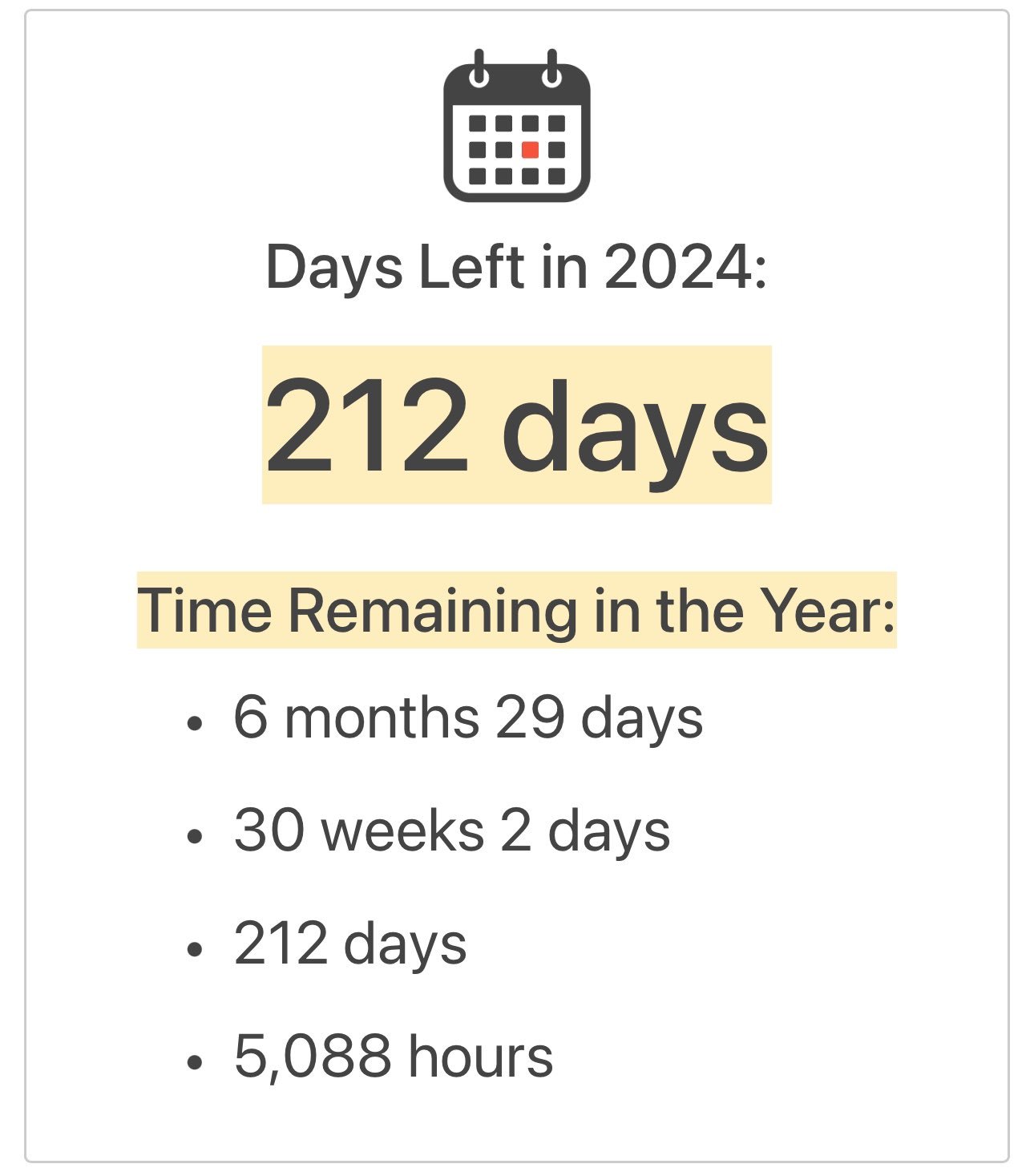
How Many Months Is 212 Days: Everything You Need To Know
212 days is equivalent to approximately 7 months. Have you ever wondered how long 212 days actually translates into months? Understanding this conversion can provide clarity when planning long-term goals or events based on a monthly timeline. Knowing the answer to the question “how many months is 212 days” can help you manage your time effectively and stay organized in your tasks and projects. Let’s delve deeper into the conversion of days to months and explore the significance of this calculation in everyday life.
Understanding How Many Months is 212 Days
Have you ever wondered how many months are in 212 days? It might sound like a tricky question, but with a little bit of math and some fun facts, we can unravel the mystery together!
Breaking Down the Days into Months
Let’s start by looking at how we can convert days into months. A month can have varying numbers of days, with some months having 30 days, while others have 31. February is a bit different, as it typically has 28 days, except in leap years when it has 29 days. To figure out how many months 212 days is, we need to consider the differences in days each month.
Understanding the Average Number of Days in a Month
To make things simpler, we can start by looking at the average number of days in a month. If we take into account the varying days in a month, the average comes out to around 30.4 days per month. This average helps us estimate the number of months in a given number of days more accurately.
Calculating the Months in 212 Days
Now that we have an idea of the average days in a month, let’s calculate how many months are in 212 days. To do this, we can divide the total number of days by the average days in a month.
212 days ÷ 30.4 (average days in a month) ≈ 6.97 months
So, approximately, 212 days is equal to about 6.97 months. This means that 212 days is almost 7 months!
Fun Facts About Months and Days
Did you know that the ancient Romans were the first to introduce the concept of a 12-month calendar? They based it on the cycles of the moon, with each month roughly corresponding to a lunar cycle. This is why some months have 30 or 31 days, mirroring the phases of the moon.
Another fascinating fact is that the word “month” comes from the word “moon.” In many ancient cultures, months were actually based on the lunar cycle, making a month roughly the time it takes for the moon to complete one full cycle of its phases.
Leap Years and February
Remember when we mentioned leap years and February having 29 days instead of 28? Leap years occur every four years to help synchronize the calendar year with the solar year. This extra day in February gives us a total of 366 days in a leap year instead of the usual 365 days.
So, if you were curious about how many months are in a leap year, it would be slightly more than in a regular year due to that extra day in February!
Real-Life Examples of 212 Days
Now that we know how many months are in 212 days, let’s explore some real-life scenarios where this timeframe might be significant. For example, 212 days could be approximately how long it takes to grow certain fruits or vegetables from seed to harvest. It could also represent the time it takes to complete a school year, with breaks and holidays included.
Thinking about time in terms of months and days helps us understand the passing of time in a more relatable way. Whether you’re counting down to a special event or just curious about time, breaking it down into months and days can make it more manageable and interesting!
So, the next time someone asks you how many months are in 212 days, you can impress them with your newfound knowledge! Remember that while days and months can be tricky to convert, a little math and some fun facts can make it all the more enjoyable to explore.
Time is a fascinating concept that we experience every day, and understanding how it breaks down into smaller units like months and days can help us appreciate its passage even more. Keep exploring and learning about time – who knows what other exciting discoveries you might make!
After 212 days it FINALLY happened!
Frequently Asked Questions
How many months is 212 days equivalent to?
212 days is approximately equal to 7 months when considering a standard month of 30 days. To calculate this, divide 212 by 30 days per month, which gives you around 7 months with a few days left over.
Can you convert 212 days into years and months?
When converting 212 days into years and months, you end up with about 7 months. To break it down further, there are roughly 0 years and 7 months in 212 days if we consider a year to be 365 days.
How many months and weeks make up 212 days?
212 days consist of approximately 7 months and 3 weeks. To find this, divide 212 by 30 days per month to get 7 months. After that, the remaining days can be divided by 7 days per week, resulting in around 3 weeks.
Final Thoughts
So, how many months is 212 days? It is approximately 7 months. Time calculations can vary based on different factors, but this estimation provides a simple way to understand the duration in terms of months. Keep in mind that months have different lengths, so the exact number may fluctuate slightly. Understanding the relationship between days and months can help in planning and organizing tasks efficiently.
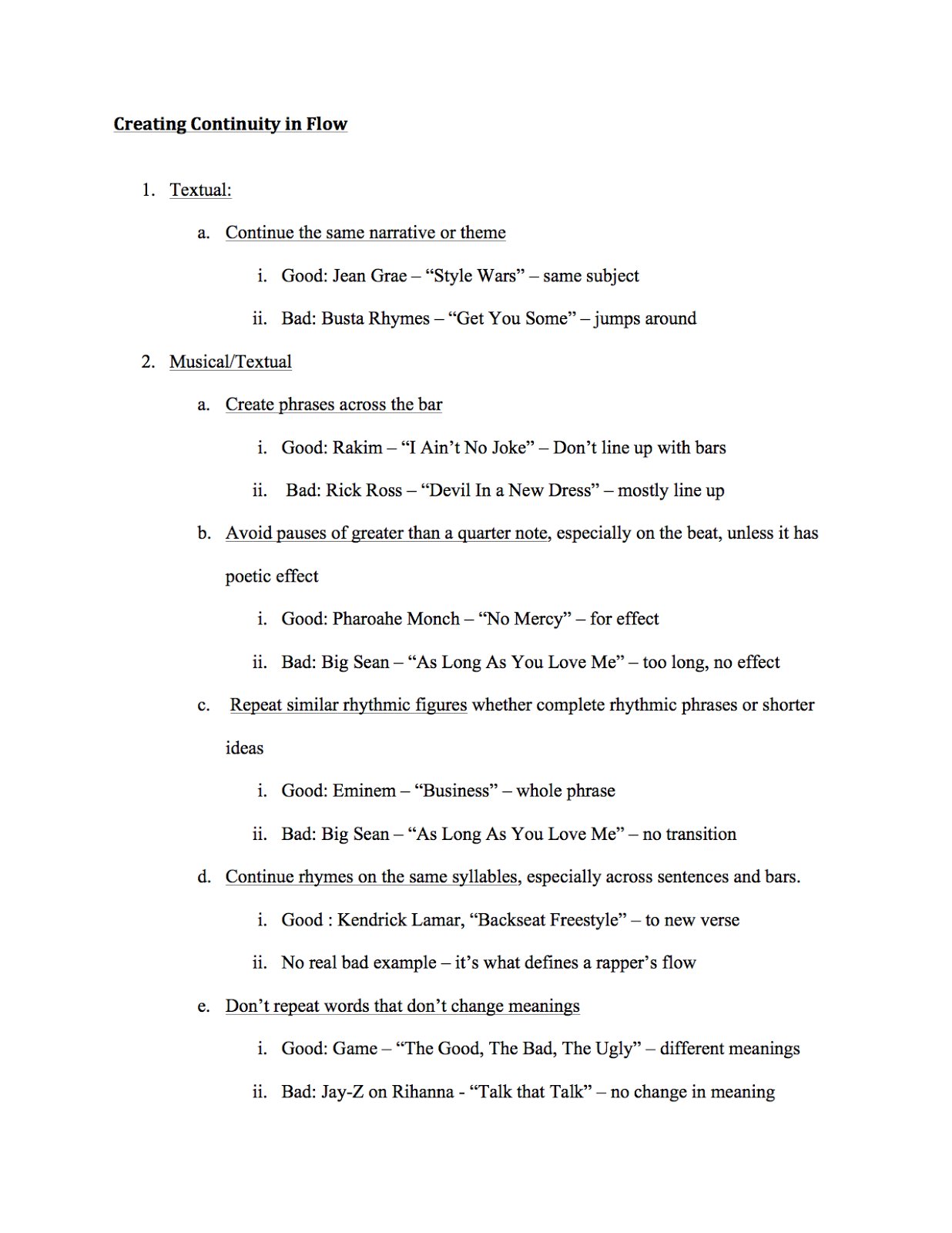
The Ultimate Guide: How To Count Bars In Rap
Counting bars in rap can be a challenge for beginners. A bar in rap typically consists of four beats, representing a fundamental unit in structuring lyrics and music. To count bars effectively, listen closely to the beat and identify when it repeats every four beats. Understanding how to count bars in rap is crucial for artists, producers, and enthusiasts to create cohesive and rhythmic verses. Let’s dive into this essential skill and master the art of counting bars in rap!
How to Count Bars in Rap: A Comprehensive Guide for Beginners
Welcome to our detailed guide on how to count bars in rap music. If you’ve ever found yourself nodding your head to a rap song and wondering how rappers keep their flow so smooth, you’ve come to the right place. Bars are the building blocks of rap lyrics, and understanding how to count them can help you appreciate the artistry behind your favorite rap songs. In this article, we’ll break down what bars are, why they matter, and most importantly, how you can count them like a pro. So, grab your notebook and let’s dive in!
What Are Bars in Rap Music?
Before we get into the nitty-gritty of counting bars, let’s first understand what bars actually are. In music, a bar (also known as a measure) is a unit of time that organizes the beats of a song. In rap music, a bar typically consists of a specific number of beats, with each beat representing a specific moment in the music where you could tap your foot or clap your hands. Bars create a rhythmic structure that rappers use to craft their lyrics and flow.
Think of bars as the musical framework that rappers use to deliver their rhymes. Just like a painter uses a canvas to create a masterpiece, a rapper uses bars to create lyrical magic. Understanding bars is essential if you want to appreciate the intricacies of rap music and gain a deeper insight into how rappers construct their verses.
Why Counting Bars Matters
Counting bars in rap music is like deciphering a secret code that unlocks the rhythm and flow of a song. By learning how to count bars, you can develop a keen ear for music and better appreciate the skill and artistry that goes into crafting rap lyrics. Whether you’re an aspiring rapper looking to improve your own skills or simply a fan who wants to delve deeper into the world of hip-hop, mastering the art of counting bars is a valuable skill to have.
When you can count bars in a rap song, you’ll be able to anticipate changes in the music, understand the structure of the verses, and even predict where the beat will drop next. It’s like having a superpower that lets you connect more deeply with the music and pick up on nuances that others might miss. So, if you’re ready to level up your rap game, let’s learn how to count bars!
How to Count Bars in Rap
Now that you know why counting bars is important, let’s get into the practical steps of how to actually count bars in rap music. Don’t worry if you’re not musically inclined – anyone can learn how to count bars with a bit of practice and patience. Here’s a step-by-step guide to help you master the art of counting bars:
Step 1: Listen for the Beat
The first step in counting bars is to listen for the beat of the song. The beat is the underlying pulse that drives the music forward, and it’s what you’ll use as a reference point to count bars. Pay attention to the rhythm of the instrumental – you’ll notice that certain sounds repeat at regular intervals. Try tapping your foot or nodding your head to the beat to help you stay in time.
Step 2: Identify the Pattern
Once you’ve tuned into the beat, listen for a recurring pattern in the music. In rap songs, beats are often structured in groups of four, with each group representing a bar. This means that you’ll typically hear a pattern repeat every four beats. By identifying this pattern, you’ll be able to start counting bars more accurately.
Step 3: Count Out Loud
As the instrumental plays, start counting out loud to the beat. Say “one, two, three, four” at each interval to mark the end of a bar. When you reach the fourth beat, you’ve completed one bar. Keep counting in groups of four until you’ve gone through the entire song. Don’t worry if you lose track at first – counting out loud can help you stay on course.
Step 4: Practice, Practice, Practice
Like any skill, counting bars takes practice. The more you listen to rap music and actively count bars, the easier it will become. Challenge yourself by counting bars in different songs and genres to strengthen your rhythmic skills. With time and dedication, you’ll be able to count bars like a seasoned pro.
Common Mistakes to Avoid
As you embark on your journey to master the art of counting bars in rap music, it’s important to be aware of common mistakes that beginners often make. Here are some pitfalls to watch out for:
Mistake 1: Focusing Only on the Lyrics
While the lyrics are a crucial part of rap music, counting bars requires you to pay attention to the underlying beat and rhythm of the song. Don’t get too caught up in deciphering the words – instead, focus on the musical structure of the track.
Mistake 2: Losing Track of the Beat
It’s easy to get carried away by the flow of a rap song and lose track of the beat. Remember that the beat is your guide for counting bars, so stay tuned in to the rhythm to avoid getting off course.
Mistake 3: Overthinking It
Counting bars should be a fun and engaging exercise, not a stressful task. Don’t overthink it – let the music guide you and enjoy the process of unraveling the rhythmic patterns within each song.
Congratulations on making it through our guide on how to count bars in rap music! We hope you’ve gained valuable insights into the importance of bars in rap, how to count them effectively, and common mistakes to avoid along the way. Remember, mastering the art of counting bars is a skill that takes time to develop, so don’t be discouraged if you don’t get it right away.
Keep practicing, keep listening to rap music with a critical ear, and most importantly, have fun with it! The world of rap is rich with creativity and rhythm, and by learning how to count bars, you’re unlocking a new layer of appreciation for the genre. So, put your newfound knowledge to the test, crank up your favorite rap song, and start counting bars like a pro!
Happy rapping!
How To Count and Write 16 Bars in Rap
Frequently Asked Questions
How can I accurately count bars in rap music?
To accurately count bars in rap music, focus on identifying the recurring pattern of beats in the instrumental. Bars typically consist of 4 beats each, so listen closely to the rhythm and note when the pattern repeats. Pay attention to the music’s structure and where the verses or chorus start and end, as this can help you determine the length of each bar.
What tools can help me count bars in rap songs effectively?
Utilize tools like a metronome or beat counter to assist you in counting bars in rap songs. These tools provide a steady beat that can help you stay on track and accurately count the number of bars. Additionally, consider using software that visually displays the waveform of the song, making it easier to identify the start and end of each bar.
Are there any tips for beginners to improve their ability to count bars in rap music?
For beginners looking to improve their ability to count bars in rap music, practice is key. Start by listening to rap songs with a clear, consistent beat and try to count along with the music. Focus on distinguishing the different sections of the song and identifying when a new bar begins. Over time, your ear will become more attuned to the structure and rhythm of rap music, making it easier to count bars accurately.
Final Thoughts
To count bars in rap, simply listen for the repeated pattern of the beat. Each group of 4 beats generally equals one bar. Pay attention to where the rhymes start and end to help you stay on track. Remember, practice makes perfect when it comes to mastering how to count bars in rap.


